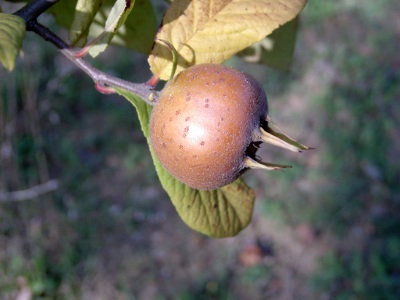︎︎︎ NESPOLO COMUNE

The mother plants that we cultivate were recovered in the areas of Citta’ di Castello and Umbertide (Perugia). It was widespread in all of Umbria especially in the cool woods on the high hills and mountain areas. The species originates from the Caucasus but it is widespread from time immemorial in the Germanic region, hence its name Mespilus germanica given by Linnaeus. The tree is small, very hardy and with irregular behavior. Its wood is hard and gnarled. It prefers cool locations without humidity stagnation and it does well even in moderately shaded sites. It blooms at the end of April and withstands low temperatures. The fruit is in reality a false fruit and has a top-like shape surmounted by a crown of sepals. It is completely brown with a thick skin. Our local variety is medium-large in size and somewhat round. It is harvested in November but because of its high tannin content it must be left to soften (ammezzire) on straw or chaff in a cool room, as was done in the past. In this way its flesh will become tender, brown and slightly sour. It has very good healing properties for the intestines as both the Romans and the Crusaders held. It is an effective astringent and strengthener of the lining of the intestines. When not yet mature it would be desiccated and used together with its leaves to make decoctions.